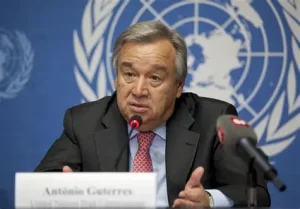Israeli media discusses Hezbollah’s calculated strategy, affirming that it remains undeterred in the face of an unprepared “Israel”.
- Aftermath of a Hezbollah rocket on an Israeli settlement in northern occupied Palestine. (Social media)
The battle against Hezbollah is long and complex, Israel Hayom wrote, highlighting Hezbollah’s ability to drain and exhaust the Israeli occupation.
In his op-ed, Israeli Reserves General Gershon Hacohen stressed that the occupation was “operating with no strategy” against Hezbollah.
On the other hand, the Islamic Resistance was strategizing and focusing on “preserving the momentum of attrition” in its hands, regardless of whether the Israeli occupation initiated a ground offensive and positioned its forces along the Litani.
All Hezbollah needs to maintain the state of attrition is a “large enough arsenal of rockets, missiles, and drones, which it already possesses, and to continue launching them toward Israel,” the newspaper added.
Regarding the Israeli public opinion and its stance toward the war on Lebanon, Israel Hayom affirmed that they [settlers] could no longer withstand the dynamic of another war of attrition, describing it as “hopeless”.
In this context, the Israeli media asked, “Has Hezbollah been defeated? Will it surrender? The answer is no,” emphasizing that Hezbollah calculates its actions and examines the trajectory of the war with every strike.
It further warned that the war still has not reached its peak, “it is still at the front and Hezbollah is on its way despite the delay.”
The significance of the Jezreel Valley
Amid the escalation on the northern front and the expansion of Hezbollah’s range of fire to include hundreds of thousands of Israeli settlers, Israeli media affirmed that the Jezreel Valley [Marj Ibn Amer] now represents the new line of confrontation in the occupied North.
Marj Ibn Amer is a vast plain located between occupied al-Jalil and the Nablus Mountains in northern occupied Palestine. It is 40 km long and 19 km wide, covering an area of 351 square kilometers.
It also includes 39 settlement outposts, the largest of which is in Afula, with a population of about 42,000.
The fate of settlements
Haifa
While Hezbollah continues to launch rockets at targets belonging to the occupation in northern occupied Palestine, the Emek Medical Center reported receiving 5 injured settlers, while Rambam Hospital received 7.
In turn, the mayor of occupied Haifa spoke to Israeli Channel 12 about a “50% gap in fortification rates between the old and new neighborhoods in the city.”
He added, expressing his frustration with the performance of the Israeli government, that the government “does not recognize us, and we are alone on the ground with no money… Thanks to Nasrallah for drawing the government’s attention to us.”
Hundreds of rockets were fired from Lebanon at “Israel” over the past 24 hours, while sirens sounded in the Haifa area, Krayot, and Shfaram, according to Israeli media, which acknowledged that rockets had landed in Krayot.
Safad
As for Safad, it has become “orphaned and empty, with 40 people remaining and feeling that the city has been forgotten, and it has turned into a major and preferred target for Hezbollah,” according to Channel 12.
According to Channel 12, the mayor of Safad stated that “50% of Israelis and educational institutions are unfortified,” noting that “they haven’t received an important directive from anyone.”
He described the situation as “a death sentence… we are moments away from collapse.”
Following Haifa, Yokneam, the Megiddo” regional council, Daliyat al-Karmel, and Isfiya were added to the list of areas facing restrictions on educational activities.
Regarding external transportation, 14 airlines suspended their flights to and from “Israel” due to the escalation with Lebanon, including Wizz, Iberia, British Airways, and Azerbaijan Airlines.
In response, Israeli media described the Hungarian airline Wizz’s decision to cancel all its flights as “the most dramatic,” as it means “leaving Israelis abroad without a solution amid transportation chaos.”



